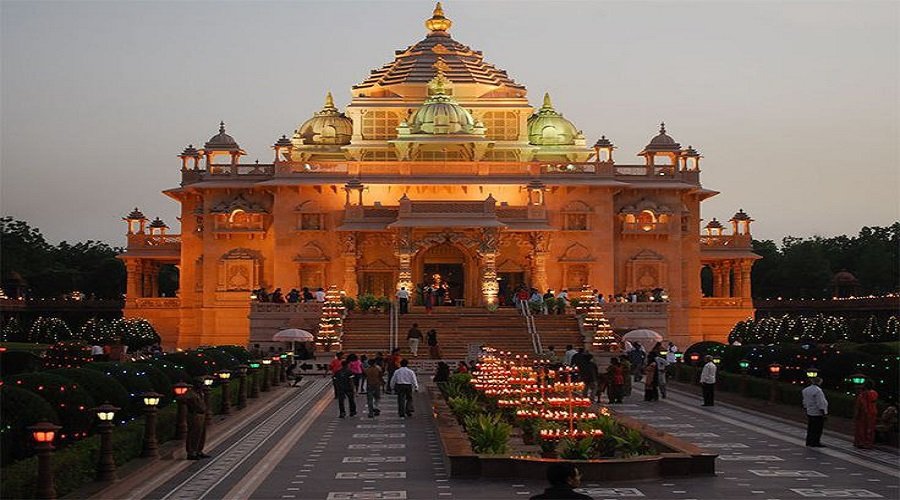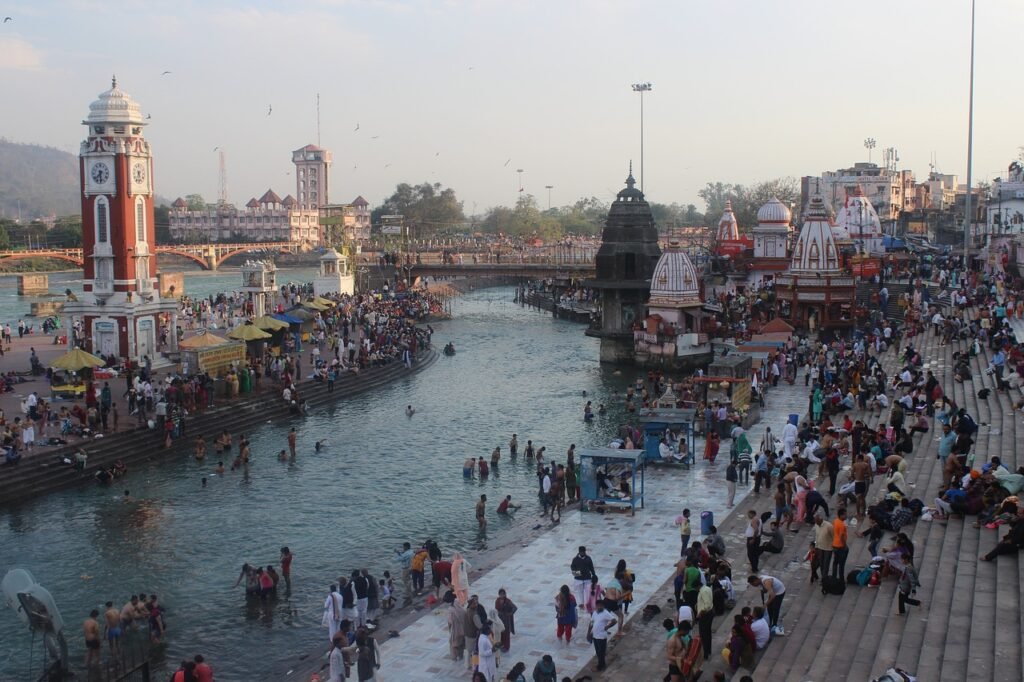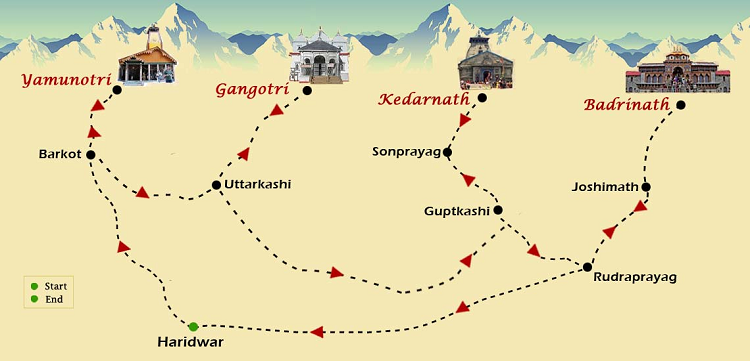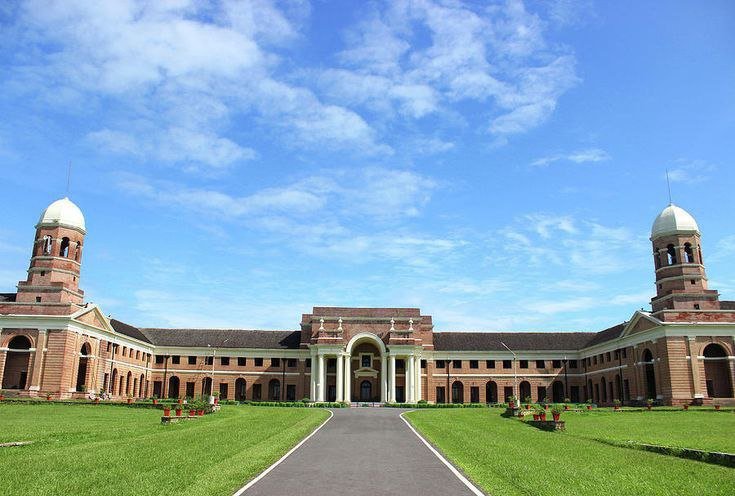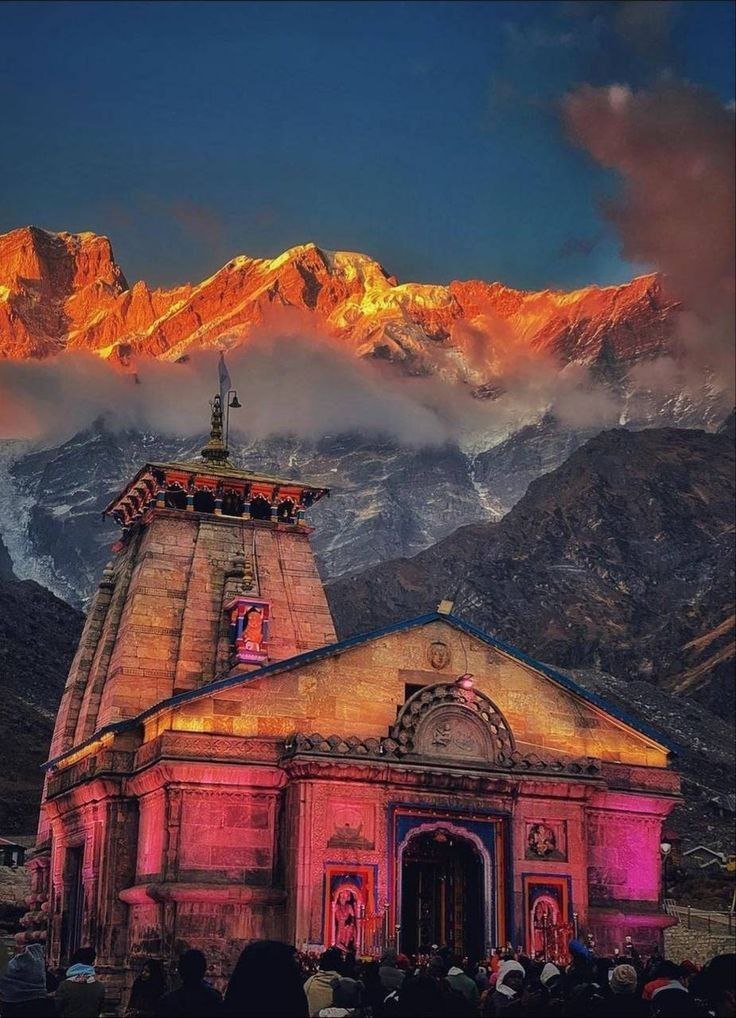Table of Contents
Toggle



History of Swaminarayan Ashram Haridwar
The Swaminarayan ashram Haridwar has a rich history dating back to the early 20th century. It was established by followers of the Swaminarayan Sampradaya, the construction of the temple was initiated by Shri Gopalanand Swami, a prominent saint of the Swaminarayan tradition, along with other devotees. The foundation stone of the temple was laid in 1912, and the temple was built in 1929.
The temple’s architecture reflects a blend of traditional Hindu temple design with elements of modern construction. The main sanctum houses the idol of Bhagwan Swaminarayan, the central deity of the temple. The temple complex also includes shrines dedicated to other deities, including Radha-Krishna, Sita-Ram, and Hanuman.
Over the years, the Swaminarayan ashram Haridwar has become a hub for spiritual activities and cultural events. It attracts devotees and tourists from all over the world who come to seek blessings and experience the spiritual ambiance of the temple.
The temple’s management has been involved in various charitable activities, including providing food and shelter to the needy, organizing medical camps, and promoting education. The temple also plays an active role in promoting the teachings of Bhagwan Swaminarayan and fostering a sense of community among its followers.
Today, the Swaminarayan ashram Haridwar stands as a symbol of devotion, spirituality, and cultural heritage, continuing to inspire and uplift the lives of people who visit it.
Swaminarayan ashram haridwar address
Shree Swaminarayan Road, Bhupatwala, Haridhwar. Pin – 249 410 UttaraKhand (India)
Swaninarayan ashram haridwar contact
(01334) 261008, +91 9412074551, +91 9719992288, +91 9837121347
Map of Swaminarayan ashram haridwar
FAQ swaminarayan ashram haridwar
1. Which 5 temples did Bhagwan Swaminarayan build.
Bhagwan Swaminarayan, the founder of the Swaminarayan Sampradaya, built six temples during his lifetime. These temples, known as the “Mandirs,” are considered sacred by followers of the Swaminarayan faith. The five main temples built by Bhagwan Swaminarayan are
A. Swaminarayan Akshardham, Gandhinagar
This temple, located in Gandhinagar, Gujarat, is one of the largest and most elaborate Swaminarayan temples. It is dedicated to Bhagwan Swaminarayan and features a blend of traditional and modern architectural styles.
B. Swaminarayan Temple, Ahmedabad
Commonly known as the Kalupur Mandir, this temple in Ahmedabad, Gujarat, is the first temple built by Bhagwan Swaminarayan. It is considered the spiritual headquarters of the Swaminarayan Sampradaya.
C. Swaminarayan Temple, Bhuj
Located in Bhuj, Gujarat, this temple is known for its carved wooden pillars and ceilings. It was rebuilt after being destroyed in an earthquake in 2001.
D. Swaminarayan Temple, Vadtal
Situated in Vadtal, Gujarat, this temple is known for its grand architecture and beautiful surroundings. It is a popular pilgrimage site for followers of the Swaminarayan faith.
E. Swaminarayan Temple, Dholera
This temple, located in Dholera, Gujarat, is known for its peaceful ambiance and beautiful architecture. It is dedicated to Bhagwan Swaminarayan and is visited by devotees seeking spiritual solace.
These temples are not just places of worship but also serve as centers of community life, cultural activities, and spiritual teachings in the Swaminarayan tradition.
2. Which is the first Swaminarayan temple in the world.
The first Swaminarayan temple in the world is the Swaminarayan Temple in Ahmedabad, Gujarat, India. Commonly known as the Kalupur Mandir, it was built by Bhagwan Swaminarayan himself and is considered the spiritual headquarters of the Swaminarayan Sampradaya. The temple is a significant pilgrimage site for followers of the Swaminarayan faith and attracts devotees from around the world.
3.Which God is Swaminarayan.
Bhagwan Swaminarayan is considered an incarnation of Lord Narayana (Vishnu) by followers of the Swaminarayan faith. He is believed to be a divine being who descended to Earth to establish dharma, promote spirituality, and uplift humanity. Swaminarayan’s teachings emphasize the importance of devotion, moral values, and service to others.
4. What is the full form of BAPS.
BAPS stands for Bochasanwasi Akshar Purushottam Sanstha. It is a major religious and social organization within the Swaminarayan branch of Hinduism, known for its temples, charitable work, and spiritual teachings.
5. Who gives money to BAPS
BAPS (Bochasanwasi Akshar Purushottam Sanstha) receives donations from its followers and well-wishers who support its activities and charitable work. These donations are voluntary and are used to fund the organization’s various projects, including the construction and maintenance of temples, educational initiatives, healthcare services, and humanitarian efforts. BAPS does not receive funding from any government or external sources and relies solely on the contributions of its members and supporters.
6. What do BAPS believe
BAPS (Bochasanwasi Akshar Purushottam Sanstha) believes in the teachings of Bhagwan Swaminarayan and the spiritual principles outlined in the Swaminarayan tradition. Some core beliefs of BAPS include:
- Bhagwan Swaminarayan as the Supreme Being
- Importance of Guru-disciple relationship
- Scriptural authority
- Service and humanitarian work
- Devotion and spiritual practice
7. What is the food of Swaminarayan.
In the Swaminarayan tradition, followers are encouraged to follow a vegetarian diet. Bhagwan Swaminarayan emphasized the importance of ahinsa (non-violence) and compassion towards all living beings, which is why a vegetarian diet is preferred. Additionally, certain foods like onions and garlic are avoided as they are believed to stimulate passions and hinder spiritual progress. Followers of the Swaminarayan tradition often prepare and consume satvik (pure) vegetarian food, which is believed to promote physical health, mental clarity, and spiritual well-being.
8. What is the food of Swaminarayan.
Bhagwan Swaminarayan passed away on the 10th day of the bright half of the month of Jeth in the Hindu calendar year 1886 (corresponding to 1 June 1830) in Gadhada, a town in present-day Gujarat, India.
9. What is the prasad in Swaminarayan Mandir
In Swaminarayan Mandirs, the prasad (food offered to the deity and then distributed to devotees) often includes simple vegetarian items such as sweets (like laddoos or pedas), fruits, and sometimes a small snack or a piece of bread.
10. Where is Swaminarayan born
Bhagwan Swaminarayan was born on 3 April 1781 (Chaitra sud 9, Samvat 1837) in the village of Chhapaiya, near Ayodhya, in present-day Uttar Pradesh, India. His birthplace is now known as the Swaminarayan Mandir and is a place of pilgrimage for followers of the Swaminarayan tradition.
11. Why do Swaminarayan's not eat onion and garlic.
In the Swaminarayan tradition, followers avoid eating onions and garlic due to their belief that these foods stimulate passions and hinder spiritual progress, Onions and garlic are believed to tamasic food, which can disturb the mind and body’s balance. By abstaining from these foods, followers seek to maintain a satvik (pure) diet that promotes physical health, mental clarity, and spiritual well-being.
12. Is Swaminarayan a god or not.
Bhagwan Swaminarayan is revered as a divine being, considered to be the incarnation of Lord Narayana (Vishnu) and also identified as an incarnation of Lord Krishna. Followers of the Swaminarayan faith believe that Bhagwan Swaminarayan descended to Earth to establish dharma promote spirituality, and uplift humanity. He is worshipped as a god and is seen as the ultimate spiritual guide and savior by his followers.
13. How to do Swaminarayan Darshan.
- Cleaning: Before entering the temple, it is customary to wash your hands, feet, and face, and ensure you are dressed modestly and respectfully.
- Entering Temple: Remove your shoes before entering the temple premises, as a sign of respect.
- Approach the Deity (Baghwan): Stand in front of the main sanctum (mandapam) where the deity is placed. Fold your hands in prayer (namaskar) and bow your head as a sign of reverence.
- Chant Prayers: You can silently chant prayers or mantras, or sing devotional songs (bhajans) while viewing the lord.
- Offering items: Offer flowers, fruits, or other items as a token of your devotion. You can place these offerings in front of the deity or in designated areas.
- Seek Blessings: Pray for your well-being, the well-being of your loved ones, and for any specific blessings you may seek.
- Exit the Temple: After completing your darshan, step back respectfully and exit the temple premises.
It’s important to note that specific practices and customs may vary among different Swaminarayan Mandirs and regions. It’s advisable to follow the instructions of the temple priests or volunteers and observe the customs of the particular temple you are visiting.
14. How to apply Swaminarayan Tilak.
Step-1 Wash your hands and face, and ensure you are dressed modestly and respectfully.
Step-2 You will need kumkum or chandan (sandalwood paste) for the tilak.
Step-3 Dip your ring finger or thumb into the kumkum or chandan.
Step-4 Starting from the center of your forehead (the location of the third eye or ajna chakra), apply a small dot of kumkum or chandan.
Step-5 With a gentle motion, spread the dot upwards towards your hairline, creating a vertical line.

